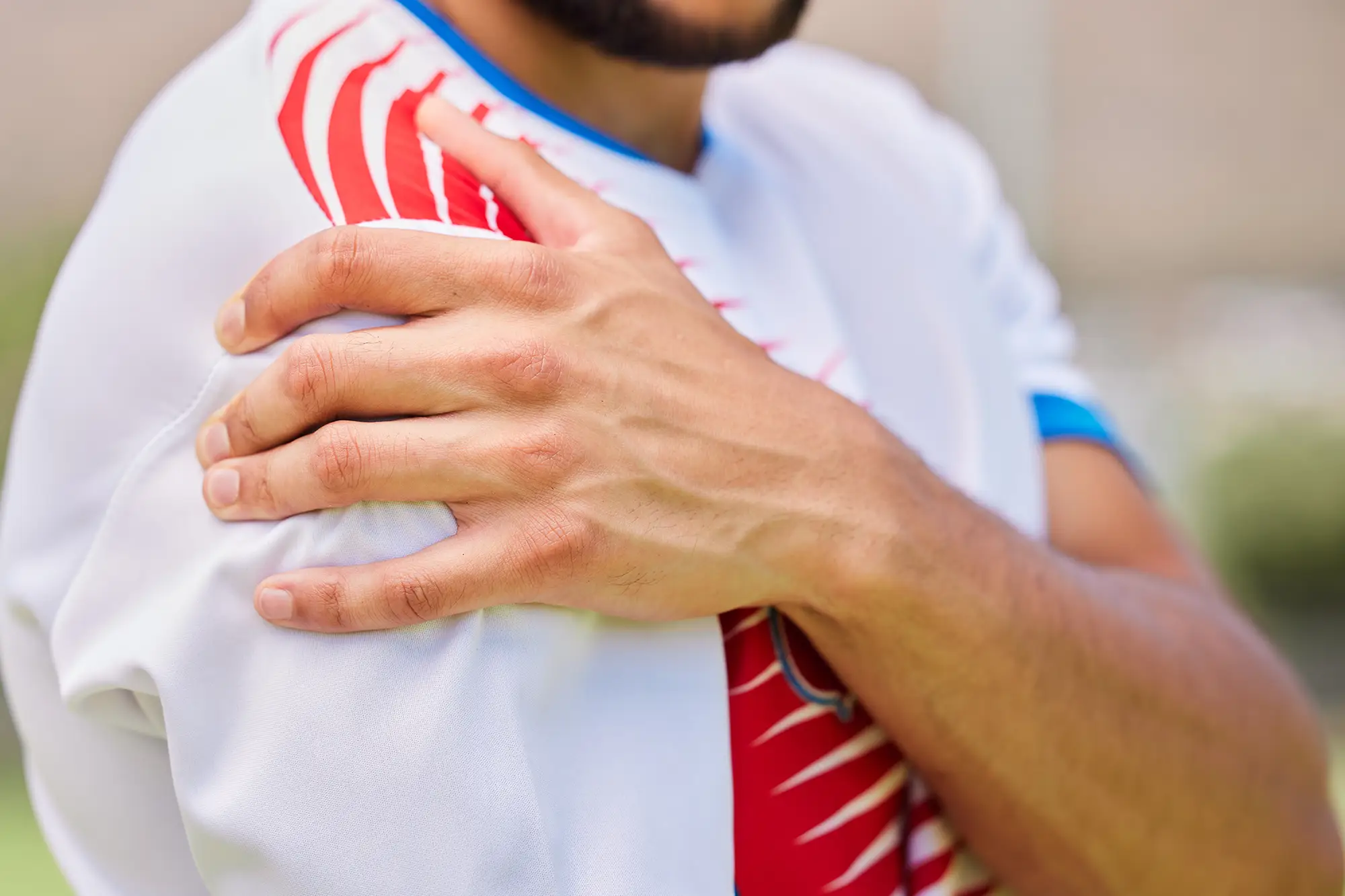Joint Pain in {City_Name}

- Injury or Trauma
Accidents, falls, or sports injuries can damage the joints and lead to pain.
- Overuse
Repeatedly using a joint or engaging in strenuous activities can result in joint pain.
- Infections
Infections, such as septic arthritis, can affect the joints and cause pain.
Types of Joint Pain
There are various types of joint pain, including:
- Osteoarthritis
Osteoarthritis is the most common type, often occurring due to the natural aging process and wear and tear on the joints.
- Rheumatoid Arthritis
Rheumatoid arthritis is an autoimmune condition that affects the joints, leading to inflammation and pain.
- Gout
Gout is a form of arthritis caused by the buildup of uric acid crystals in the joints, typically in the big toe.
- Bursitis
Bursitis occurs when the small sacs (bursae) that cushion the joints become inflamed.
How Can Joint Pain Be Treated?
The treatment for joint pain depends on its cause and severity. Here are some common approaches:
- Rest and Activity Modification
Resting the affected joint and avoiding activities that worsen the pain can help alleviate discomfort.
- Physical Therapy
Physical therapists can provide exercises and techniques to improve joint strength and flexibility.
- Medications
Over-the-counter pain relievers or prescription medications can help manage pain and reduce inflammation.
- Hot or Cold Therapy
Applying heat or cold packs to the affected joint can provide relief from pain and swelling.
- Injections
In some cases, injections of corticosteroids or hyaluronic acid may be recommended.
- Surgery
In severe cases, surgery may be necessary to repair or replace a damaged joint.
What to Expect During Recovery
Recovery from joint pain can vary depending on the cause and treatment. Here’s what you can expect:
Rest and Healing: Give your body time to heal, especially if you’ve had an injury or surgery.
Physical Therapy: If recommended, attend physical therapy sessions to regain strength and mobility.
Medications: Take prescribed medications as directed and follow your healthcare provider’s instructions.
Lifestyle Adjustments: Make necessary lifestyle changes, such as maintaining a healthy weight and avoiding overuse of joints.
Can Joint Pain be Prevented?
While not all joint pain can be prevented, you can take steps to reduce your risk:
Maintain a Healthy Weight: Excess weight can put stress on the joints, so aim for a healthy weight through diet and exercise.
Stay Active: Regular physical activity can help keep joints healthy and prevent stiffness.
Protect Joints: Use proper techniques and protective gear when engaging in physical activities or sports.
Balanced Diet: A diet rich in nutrients like calcium and vitamin D can promote joint health.
Looking for Joint Pain Treatment?
In conclusion, joint pain is a common condition that can affect anyone, from athletes to the elderly. It can range from mild discomfort to severe pain, impacting daily life and mobility. If you experience joint pain, it’s essential to consult with a healthcare professional to determine the cause and appropriate treatment.
With proper diagnosis and treatment, many people can manage or alleviate joint pain and continue to enjoy an active and fulfilling life. Remember to follow your healthcare provider’s advice and take preventive measures to protect your joints and overall well-being!

